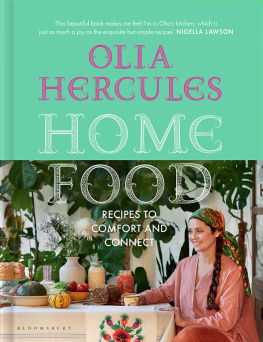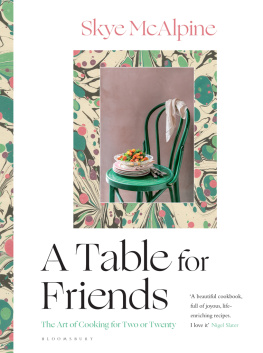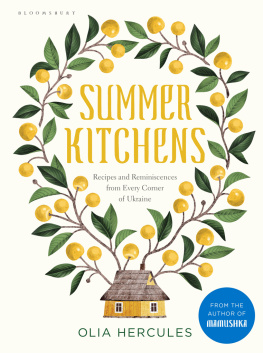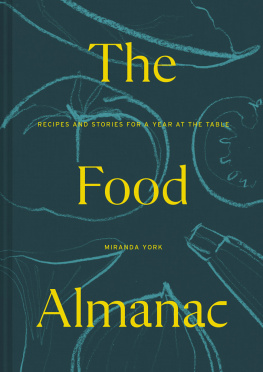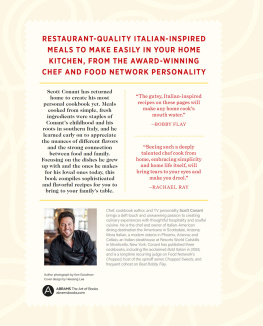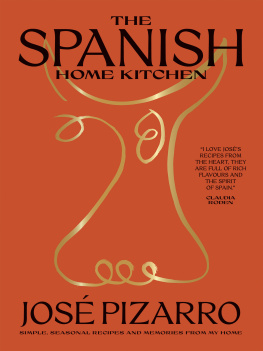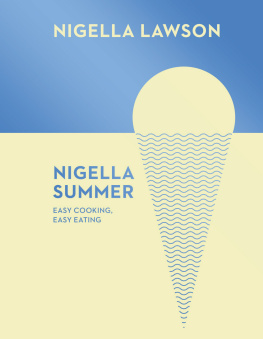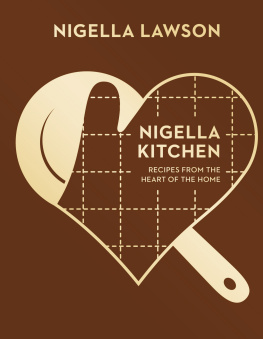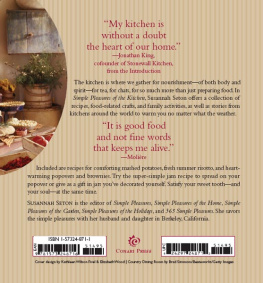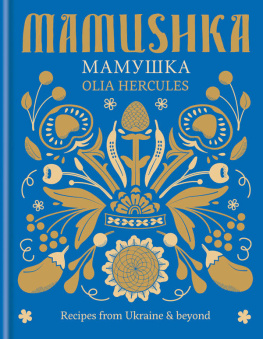


Someone once asked me to tell them what comfort food means to me.
It took some thought, but eventually it comes down to this: it is when you come home from school, feeling tired or a little low, hoping that your mum would make your favourite dish, and of course she is telepathic, so she makes exactly that thing. Your worries dissolve in a bowl of dumplings, and your neurons get wired and fixed in a way that makes dumpling dough forever a reminder of unconditional love and protection.
I will be honest, I wasnt entirely sure where this book was going to end up when I started writing it, but by the time I finished it was obvious: it is about the feeling of comfort, about the connections that we all make in life though our experiences and memories of meals shared with those we love. And that is what food, and choosing cooking as my livelihood, is all about for me.
I didnt cook as a child growing up in the South of Ukraine, but I ate very well because my mother Olga, my father Petro and my extended family were all so excellent at it. It was only when I left my family and ended up as a student in the UK that I was suddenly drawn to cooking. When phone conversations failed to satisfy my longing for comfort, home and love, cooking my mums food succeeded. Suddenly, when I cooked, those early-wired neurons in my brain fired up very specific feelings; feelings of wellbeing.
In my last cookbook, I assumed the role of a travel food writer. I felt as though it was my mission to record recipes from the little-known and underrated food culture of Ukraine. I loved the anthropological and societal depth of the research and felt it was important to record recipes that may very soon become obsolete. During the coronavirus pandemic, when travel was no longer possible, I had an opportunity to write a different kind of cookbook. So much of the way that I see the world is shaped by the dishes that I taste, and I have been lucky enough to taste more than one cuisine and sample more than one culture.
I emigrated twice, once to Cyprus at the age of twelve and once to the UK at the age of eighteen. I also studied Italian at university, so I got to experience life in Italy for a year and a summer. When I ended up in Italy, seeing friends who were my age cook with immense enthusiasm reinforced my interest in cooking.
Eventually, after two degrees, and the beginnings of a career as a journalist, I decided to turn cooking into my work, into my life. I wanted even the hardest physical graft to feel like fun. I was often exhausted and burnt out, but I loved cooking. The feeling of feeding many people at once was like a drug, it made me feel so good. With time, I also became an author and cookery teacher, often telling readers and pupils stories about my family and my childhood. That was an even bigger buzz.
I often wonder what it is that makes me feel this way. I can do no better at an answer than that it is a combination of sensory pleasure, story-telling, connection and the passing on of knowledge and skill.
This book, then, is a reflection of my life in food from my grandmothers stories to my own which has been spent (so far at least) in Ukraine, Cyprus, Italy and the UK. It is a very personal book, but, as always, I love telling other peoples stories, so you will find plenty of those within recipe introductions and in the short and poignant reminiscenses written by my friends some in the food business, some not, but who all share a love of and fascination with food scattered throughout the book.
All the recipes in this book had to pass two tests. The first was the test of universal deliciousness. I know it sounds obvious, but there are some recipes nestled in each of our lives that are a tad too esoteric to pass that scrutiny. (The sweet vermicelli dishes of Ukraine, or the salads smothered in salad cream of 1970s UK come to mind.) The second important trial a recipe had to pass to get into this book was whether I wanted to get in the kitchen and make it again and again, aka the cooking enjoyment factor.
Some of the recipes here are very easy everyday workhorses, others need a little more time. Some I have been cooking a lot in the past couple of years, others have been fetched back as happy and delicious memories from earlier times in my life. Almost all of them have been significant in the making of me as a person.
All of the dishes have also been cooked and tested many, many times by me, my friends and family, as well as by professional testers. They are lived-in recipes, cooked by and for different people, for individuals, couples, whole families or a crowd. (And, in fact, its always worth making a recipe that serves more people than you have to feed; its an unusual soul who ever complains about leftovers) I do find it difficult to estimate portion sizes, so you should know that all these dishes are intended to serve people who like to eat!
A lot of the recipes are canvases and are presented to you in their simplest form. But you can of course jazz them up, or substitute ingredients according to availability and seasonality. Just think: have you got some tired herbs at the back of the fridge that are not quite slimy and revolting yet, just very forlorn looking? Because they are already so soft and limp, consider blitzing them and adding to a stew, or stirring them through yogurt as a sauce or dip.
Perhaps a recipe calls for celeriac, which you dont have: could you swap in a potato or a parsnip or another starch? Another recipe may call for a specific vinegar or sugar, but unless I state that only this ingredient will work, you will likely be fine to use what you have at hand.
In this book, I am hoping to guide you, give you confidence and encourage you not to feel anxious in the kitchen. There are enough anxieties in life; cooking should be about trying to let go and relax. If something goes slightly wrong, more likely than not it can be fixed, overlooked or learned from!
For some of my favourite but slightly more technical recipes, I was keen for you to have me at your shoulder as you cook. So we have created short videos, in which i guide you through how to roll dumplings, for instance, plait festive yeasted breads, or make delicious, nutty brown butter.
I was very keen to channel my grandmother Vera throughout the book, because she was the most frugal and mindful person: the Economising Queen. So please do look out for special sections Ive placed within some of the recipes, with tips on using up leftovers and even transforming them into new meals, or how you can use a recipe with or within another. This accurately reflects the way I cook at home, and it felt natural to add these in for you too.
One of the stories I often tell is about the walnut tree that was right outside the summer kitchen at my other grandmothers house.
My maternal grandmother Lusia was an outstanding cook. She also had six children, so the extended family was huge and we got together often, especially in the summertime. Aunties, uncles, cousins, nephews and nieces would travel from many cities in Ukraine to feast under the walnut tree. (This joyful family scenario continues today, albeit these days under my mums canopy of wild grapes instead of my grandmothers walnut tree.) We would sit and eat and drink and listen to stories. Some were laugh-out-loud funny, some were so sad we all cried. I often wondered how my grandparents managed to remain so kind and gentle, given all they had gone through.

